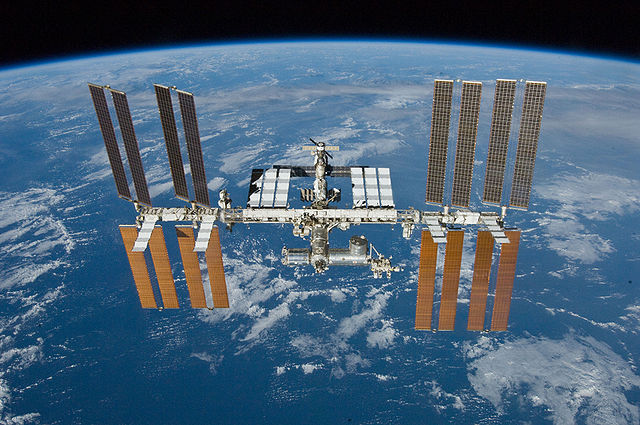The latest news about why maybe we don’t want to spend too much time in microgravity is out, and the answer’s pretty awful: potential blindness. Even if we’re not 100% on the mechanism just yet — fluid buildup, yes, but what kind of fluid? — the obvious answer is artificial gravity. The problem though? You guessed it: cash.
A new study presented at the Radiological Society of North America has suggested that VIIP (visual impairment due to intracranial pressure) might not be the result of vascular fluid buildup, but of cerebrospinal fluid buildup. Either way, there’s fluid building up in the heads of astronauts, and it’s having negative effects on their eyesight — possibly permanent effects. But whatever the proximate cause, the root one is pretty clear: we’re not really made to exist for long periods in microgravity.
The microgravity (often referred to as weightlessness) experienced by astronauts in orbit makes even simple things more complicated: bathing, eating, exercising, and more all come with a host of extra setup requirements and techniques. Wouldn’t it be simpler, you think, to just spin up a space station like they do in 2001?
Yes and no. Yes, simpler for the astronauts. Absolutely. They could just act like they were on Earth (though they might not want to look out the window much).
But it wouldn’t be simpler for the engineers, and more than that, for the lobbyists trying to get things funded.
See, you can’t just spin up any craft — that’s not how it works. A small spinner has two problems — it has to spin really fast, and humans aren’t tiny. That second one means that unless you’re pretty far away from the center of motion — on the order of something over a hundred metres — the difference in what your head feels compared to what your feet feel would be at the least disorienting and possibly much worse for you, with all your fluids pooling in your feet.
For 1G, you’d probably want a ring over 200m across.
Now, that’s not a problem from a physics perspective, and maybe not even one from an engineering perspective. But it is a problem from an economics perspective. The ISS is 109m long at its widest point, and it cost $150 billion to construct.

As you can see it’s basically one long tube with a shorter intersecting tube at right angles and another even shorter one crossing that one, and it’s about 925,000lbs in mass. What we’d be talking about is a circle so big it doesn’t even fit in that picture, with at least one tube twice as long as the ISS inside it so something could dock at the center where it would be the least insane to try to do so.
You could probably lower costs by lowering gravity — maybe you only want to spin it up to Mars gravity, which, at 3.711 m/s², is roughly a third of Earth’s 9.807 m/s². Slower spinning could make for a smaller ring, but maybe not proportionally, since humans aren’t getting any shorter and you still want their heads to feel the same as their feet.
And none of this means it’s impossible to do, either. Elon Musk thinks he can get 4425 850+lb satellites into orbit for ten billion dollars, and for those without a calculator handy, that’s roughly 3.75 million pounds, or four times the mass of the ISS. Of course launching satellites is a far cry from designing, launching, and assembling a rotating space station, but that doesn’t mean we won’t ever do it. It just explains why we haven’t done it just yet, that’s all.
And after all that, compared to NASA’s latest problem, artificial gravity doesn’t seem so challenging.
***
Thanks for reading! Except for the very *very* occasional tip (we take Venmo now!), I only get paid in my own (and your) enthusiasm, so please like This Week In Tomorrow on Facebook, follow me on Twitter @TWITomorrow, and tell your friends about the site!
If you like our posts and want to support our site, please share it with others, on Facebook, Twitter, Reddit — anywhere you think people might want to read what we’ve written. If there’s something you think we’ve missed or a story you’d like to see covered, drop us a line! Thanks so much for reading, and have a great week.
***
Richard Ford Burley is a human, writer, and doctoral candidate at Boston College, as well as an editor at Ledger, the first academic journal devoted to Bitcoin and other cryptocurrencies. In his spare time he writes about science, skepticism, feminism, and futurism here at This Week In Tomorrow.

